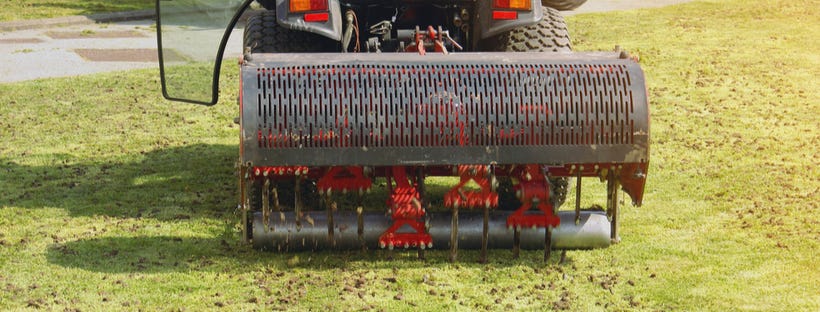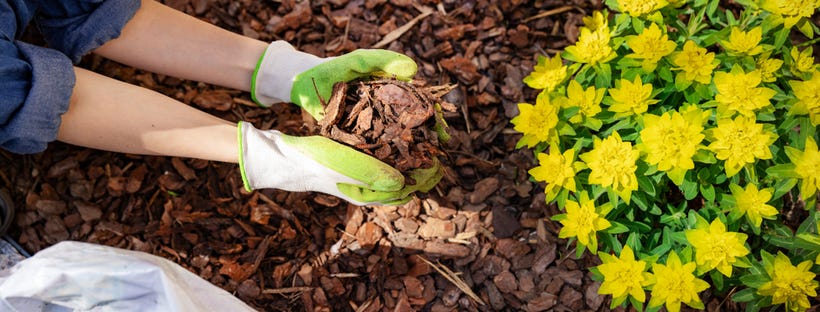It takes a bit of sunshine and some warmth to lift our spirits and bring us outdoors after a period of cold weather. With the arrival of spring, your lawn seems to be in lively spirits with green as far as the eye can see plants… unless, that is, if you happened to suffer the fate of a dead and dying lawn throughout winter.
With an actionable and thoughtful plan, however, your lawn will be ready to take on all that the season offers. So, it’s time for a clean-up and get your outdoor living area ready for spring.
Give Your Lawn a Spring Clean
Winter can wreak havoc on your yard. It’s prudent to start by cleaning up in early spring to remove any residual debris scattered from end to end. You can use a leaf rake to collect the debris into piles.
To streamline the process, you might consider using custom tarps to collect and carry the debris from your lawn. Ensure you begin cleaning when the ground dries, as a soggy lawn can compact the soil and damage your grass.
Mow Your Lawn

Before prepping your lawn for spring, clean twigs, leaves, and debris gathered over winter. While mowing the lawn, debris can get stuck in your mower, blocking the blades from trimming back the top of the grass. In turn, with overgrown grass comes the possibility of weeds rooting deep into the soil.
Apply a Pre-Emergent Herbicide
Early this spring, use a fertilizer that feeds your grass and a pre-emergent herbicide to protect it . After eight weeks, apply both again with a broadleaf weed killer. This inhibits the growth of crabgrass so you don’t have to fight it all season.
To lower your cost, you can opt for a brand that provides a combination of weed killer and a pre-emergent herbicide in one application. Several pre-emergent herbicides are effective for about three months. You once again will need to apply it during the summer. Regardless of whether you live in a cold or warm area, a pre-emergent herbicide is perfect for it all.
Aerate Your Lawn

Heavy foot traffic, pets, recreational activities, and even lawnmowers can compact your lawn’s soil. This affects root growth and can cause a thatch, otherwise defined as a combination of roots and debris that accumulates at the soil surfaces and slowly decomposes grass stems.
Aerating your lawn in the spring helps build healthier soil and inhibits thatch build-up, so water, air, and nutrients reach the root zone. You can punch holes in your lawn’s surface and reduce surface compaction to let air permeate the ground. These tiny holes create a passage for fertilizer and water to reach the root zone below the turf.
Check the Soil
Opt for a soil test to make the most of the spring for your trees, plants, and shrubs. Once your soil dries out, you can collect a sample for a soil test. This test will help you in collecting recommendations for fertilizers. While you can get your soil tested throughout the year, fall and spring are ideal for applying different soil amendments.
With a soil test, you can also avoid applying multiple fertilizers. Using only one type of fertilizer will help you save money and keep your plants in perfect condition. Besides, using only the fertilizer you need prevents excess nutrients from getting into the soil.
Pro Tip: You might even consider composting as an alternative if you have hesitation with introducing foreign mulch or soil into your lawn’s delicate ecology. A simple bin coupled with a sturdy base and a dumpster cover is all you need to start!
Service Your Lawn Mower
Spring automatically makes getting out the lawnmower a necessity. Check your mower for start-ups and give it a thorough service once a year. Stubborn start-ups are a sign that your mower needs a tune-up. If it needs more than one tune-up, consider buying a new one.
To keep your mower up and running throughout the season, you need to sharpen its blade. Regular sharpening of the blade ensures that your grass is in top condition rather than one with ragged brown tips. You don’t even have to make this step in the process much of a big production. Think of it as a light exercise in maintenance, checking what needs to be checked under the sheath of your outdoor pergola cover.
Spread Mulch

Spread a 2 to 3-inch layer of mulch around the base of trees, shrubs, and plants. You can also place it near perennials and emerging bulbs. This helps maintain soil moisture, moderate soil temperature, and increase essential soil microorganisms’ population.
Good sources of mulch are shredded bark or leaves, composts, or dried leaves. You can store excess mulch in custom covers and keep it handy whenever required when not in use. Recycled rubber also works best around shrubs and trees.

















Recent Comments